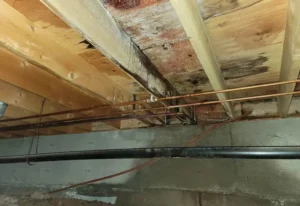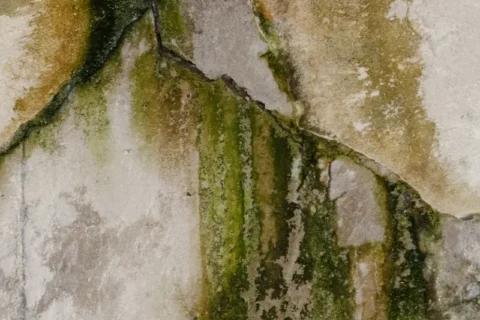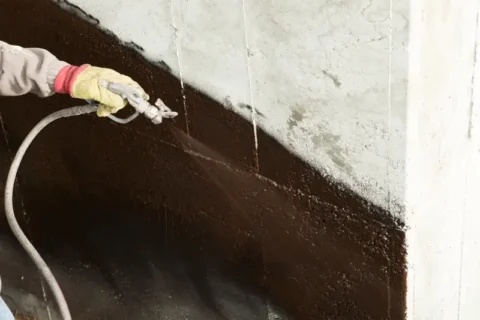About Your Home’s Sill Plate
 What You Need to Know About Your Home’s Sill Plate
What You Need to Know About Your Home’s Sill Plate
When thinking about the structure of your home, you likely consider the foundation, walls, or even the roof. But have you spared a thought for the sill plate? This hidden component of your home is often overlooked yet critical to your home’s structure. The team at Everdry Waterproofing of Wisconsin is here to help you better understand all parts of your home’s foundation, including the sill plate. Learn more about this structural feature and the importance of maintaining it.
What Is a Sill Plate?
A sill plate is a horizontal piece of treated lumber that sits between your home’s foundation and the frame of your house. Essentially, it serves as the base of your house’s wooden frame, connecting the foundation to the walls above. Usually made of pressure-treated wood, it resists moisture and prevents long-term water and pest damage.
Where Is the Sill Plate on a House?
To find the sill plate, look along the base of your home’s perimeter walls. It’s installed directly on top of the concrete foundation and is often anchored in place using metal bolts. These bolts lock the sill plate securely into the foundation, ensuring your home stays stable and resists shifting.
What Does a Sill Plate Do?
At first glance, a foundation sill plate seems like nothing more than a simple piece of wood. Nevertheless, the sill plate plays an essential role in your home’s construction. Here’s how this piece of wood reinforces a building’s structure:
- Support—The sill plate supports the walls of your home and evenly distributes their weight across the foundation.
- Connection—The sill plate connects the wooden framing of your house to the foundation, acting as a mediator between the two materials.
- Protection—This piece of lumber is treated with various chemicals, which allow the sill plate to protect the rest of the wooden structure from moisture damage or pest infestations.
What Is the Difference Between a Bottom Plate and a Sill Plate?
While both the bottom plate and sill plate are essential components in construction, they serve different purposes and are located in different areas. The sill plate is situated at the base of the home, connecting the walls to the foundation, and is mainly responsible for anchoring the structure and preventing movement.
On the other hand, the bottom plate is a horizontal piece that sits at the base of a wall frame inside the building. It provides a foundation for wall studs and helps distribute loads evenly. Unlike the sill plate, the bottom plate is not in direct contact with the foundation and is typically made from standard untreated lumber unless additional protection is needed.
Why Is the Sill Plate Important?
The sill plate on your foundation is a critical feature of your home. Here are just a few reasons why the foundation sill is so important:
- Foundation Stabilization—The sill plate helps secure the framework of your home to the foundation. Without this component, the walls and foundation wouldn’t be as tightly anchored and could be more susceptible to shifting and cracks in the foundation.
- Moisture Barrier—Homes are always at risk of water damage, especially near ground level. The sill plate acts as a barrier, keeping moisture from seeping into the wooden frame of your house. This is especially important during humid summers!
- Pest Deterrence—A treated sill plate resists termites and other wood-damaging pests. While a few bugs are no big deal, you’ll want to make every effort to avoid full-on pest infestation.
- Structural Longevity—A well-maintained basement sill plate ensures your home stays stable and safe for decades. Damage to this essential component can trigger a lot of negative consequences that may impact your home’s overall durability.
Common Reasons for Sill Plate Repair
Over time, a basement sill plate might need repair. Here are some of the most common issues with a sill plate homeowners should be aware of:
- Moisture Damage—Sill plates are often pressure-treated, but that doesn’t mean they’re immune to water damage. Take note of any pooling water or leaks.
- Rotting Wood—Sill plates that consistently come into contact with water may start to rot, weakening their structural integrity.
- Pest Infestations—If your sill plate isn’t adequately treated or has aged, it can become a target for termites or carpenter ants.
- Poor Installation—An improperly installed sill plate might not sit flush against the foundation, risking the stability of your home.
- Shifting Foundation—Cracks or movement in your foundation can loosen bolts in the sill plate. This is especially common in older homes where settling occurs over time.
Keeping Your Sill Plate in Top Shape
The sill plate is often hidden, so monitoring its condition can be tricky. However, you shouldn’t neglect regular inspections. Taking a look at your house sill plate from time to time can identify problems before they become worse. Keep your sill plate in good shape by following these steps:
Inspect Your Sill Plate and House’s Foundation
Take a look at the perimeter of your home for visible signs of wear, water stains, or rot. Check inside your basement as well for any damage where the foundation meets the wall. If you notice cracks, gaps, or warped wood, it’s time for professional intervention.
Prioritize Preventative Maintenance
Good news! Addressing sill plate issues doesn’t have to be a nightmare if you’ve kept up with preventative maintenance. Schedule regular pest control and ensure your gutters are in proper working order. It’s also a good idea to talk to an expert about sealing your home’s foundation. These steps can help you avoid a foundation rebuild in the future.
Have a Trusted Professional on Call
You should never waterproof a foundation wall to a sill plate on your own. This is a complex job best left to the professionals. Make sure you have a trusted contractor on call when you notice issues with your foundation. Everdry Waterproofing of Wisconsin is here for Milwaukee homeowners, whether they’re dealing with water damage, bowing walls, or a worn-down sill plate.
Your Partner in Foundation Repair
The sill plate may not be a feature you see every day, but it’s one of the most essential components of your home’s structure. Keeping it in good condition means protecting your investment, ensuring stability, and avoiding costly repairs down the line. Milwaukee residents trust Everdry Waterproofing of Wisconsin for sill plate caulking and all kinds of foundation repair services, and we’d be happy to take a look at your property. Our team can identify issues and recommend fixes before they get out of hand. Contact us today to schedule service.
Ready to Get Started?
Contact Us Today to Schedule a No Pressure, No Obligation, Free Quote!


